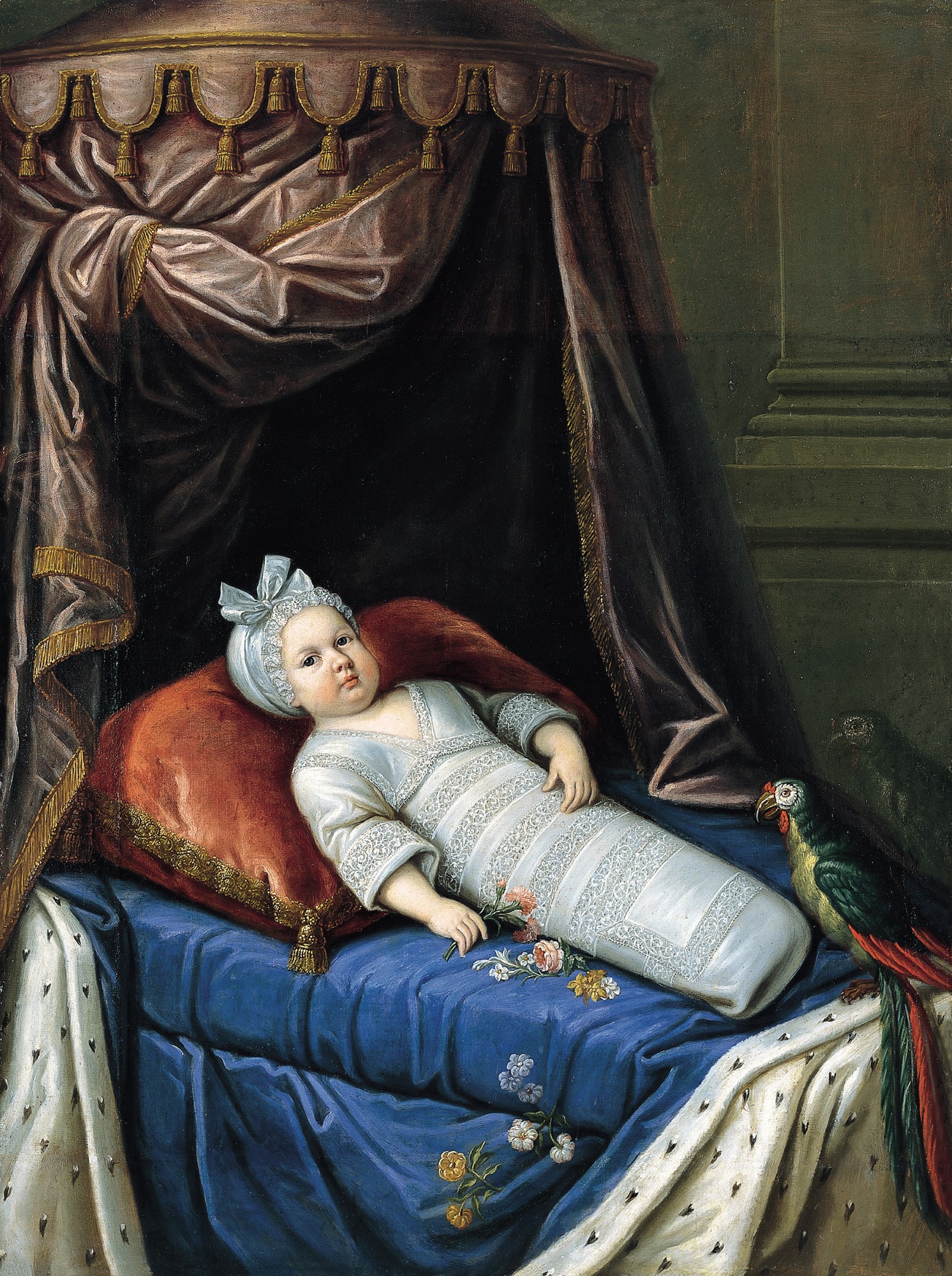21 December 2012
 Portrait of a Child Presumed to be Louis XIV (1638-1715) on a Bed
Portrait of a Child Presumed to be Louis XIV (1638-1715) on a Bed
French School, c. 1638
Oil on canvas, 130.8 x 98.5 cm
1638, the year Louis XIV was born –his second name, Dieudonné, alluding to his God-given status– saw the diffusion of a cult of maternity encouraged by the very devout Anne of Austria, in thanks for the miracle by which she had given birth to an heir to the French throne. Simon François de Tours (1606-1671) painted the Queen in the guise of the Virgin Mary, and the young Louis XIV as the infant Jesus, in the allegorical portrait now in the Bishop’s Palace at Sens.
Depictions of children in swaddling clothes became very popular with the general public. Swaddling began almost immediately after birth: midwives held new-born infants’ arms down along their sides, keeping their legs straight and their heads aligned with their body, then wrapped them tightly in swaddling bands which held them firmly in this position, as well as protecting them from shocks and cold.
This infant cannot be more than two months old, at which age his arms would have been freed. It was not until the 18th century that doctors began to sense that swaddling clothes were useless for the maintaining of a correct posture. By 1762, in Émile, Rousseau was applauding the virtues of freedom: “No caps, no swaddling bands; loose-fitting napkins, and limbs at liberty [...] leave him free to develop, to stretch out his little limbs, and you will see them growing straighter day by day”.
Interestingly enough, the artist originally painted the parrot further to the right on the canvas, then did a “pentimento” (change) and moved it down a little to the left; the support is made up of various bits of canvas sewn together, a practice common even among the painters as highly regarded as Rubens.
- Yannick Vu

This life-size portrait of a girl is a fine example of the British art of portrait painting in the early 18th century. The child is shown posing on a terrace, which is enclosed at the right foreground by the plinth of a pillar; the background is mainly filled with trees and shrubs.

The Suna and İnan Kıraç Foundation’s Orientalist Painting Collection includes two children’s portraits that are often featured in exhibitions on the second floor of the Pera Museum. These portraits both date back to the early 20th century, and were made four years apart. One depicts Prince Abdürrahim Efendi, son of Sultan Abdulhamid II, while the figure portrayed on the other is Nazlı, the daughter of Osman Hamdi Bey.
Tuesday - Saturday 10:00 - 19:00
Friday 10:00 - 22:00
Sunday 12:00 - 18:00
The museum is closed on Mondays.
On Wednesdays, the students can
visit the museum free of admission.
Full ticket: 300 TL
Discounted: 150 TL
Groups: 200 TL (minimum 10 people)